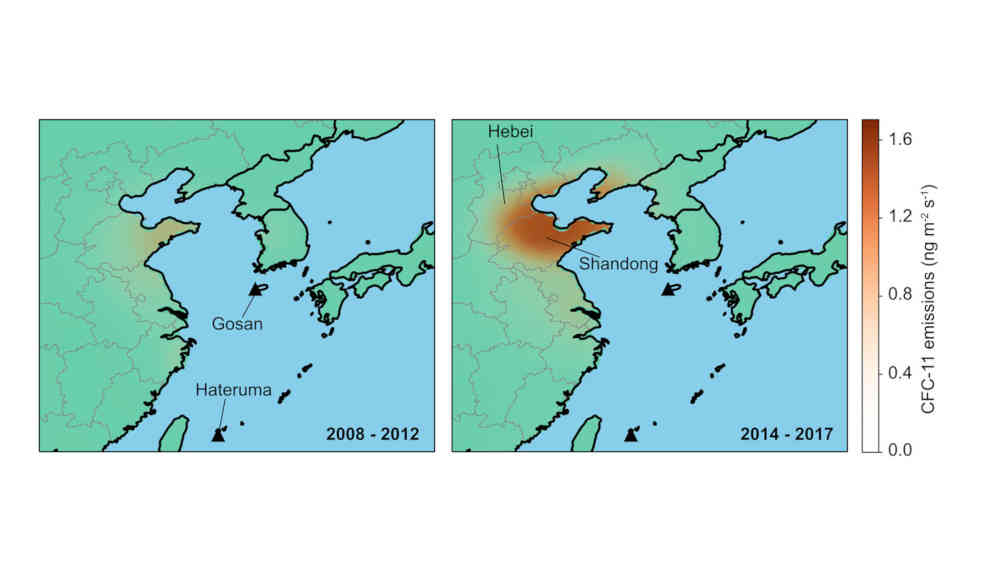China has been found to be using large amounts of Fluorochlorocarbon (FCKW), a substance that has been banned worldwide since 1987 due to its ozone-depleting effects. Despite regular measurements showing a decrease in harmful substances like Trichlorofluoromethane (CFC-11) in the atmosphere after the Montreal Protocol was passed, scientists have discovered that FCKW has been released into the air since 2012. Researchers from the University of Bristol have published a study in the journal Nature, which identifies the Chinese provinces of Shandong and Hebei as the source of the FCKW emissions. The study analyzed global data on FCKW levels in the atmosphere and conducted measurements in Japan and South Korea, which are close to the suspected regions. The results showed that China is responsible for 40-60% of the global CFC-11 emissions since 2013.
The ozone-depleting effects of FCKW have been known for decades, and the Montreal Protocol was established to phase out its use. However, the recent discovery of FCKW emissions in China suggests that the country is violating the international agreement. The study by the University of Bristol highlights the need for more monitoring of FCKW emissions in other parts of the world, where illegal emissions may also be occurring. The researchers suggest that the most likely explanation for the high levels of FCKW in China is its use in industry, despite the international ban. The study only covers the period up to 2017, and it is unclear whether the trend has continued since then.
The findings of the study are concerning, as the depletion of the ozone layer can have serious consequences for the environment and human health. The ozone layer protects the Earth from harmful ultraviolet radiation, which can cause skin cancer and other health problems. The use of FCKW in China is a reminder that international agreements to protect the environment must be enforced to prevent further damage to the ozone layer. The study also highlights the need for more research and monitoring of FCKW emissions to identify other sources of illegal emissions and prevent further damage to the ozone layer.










